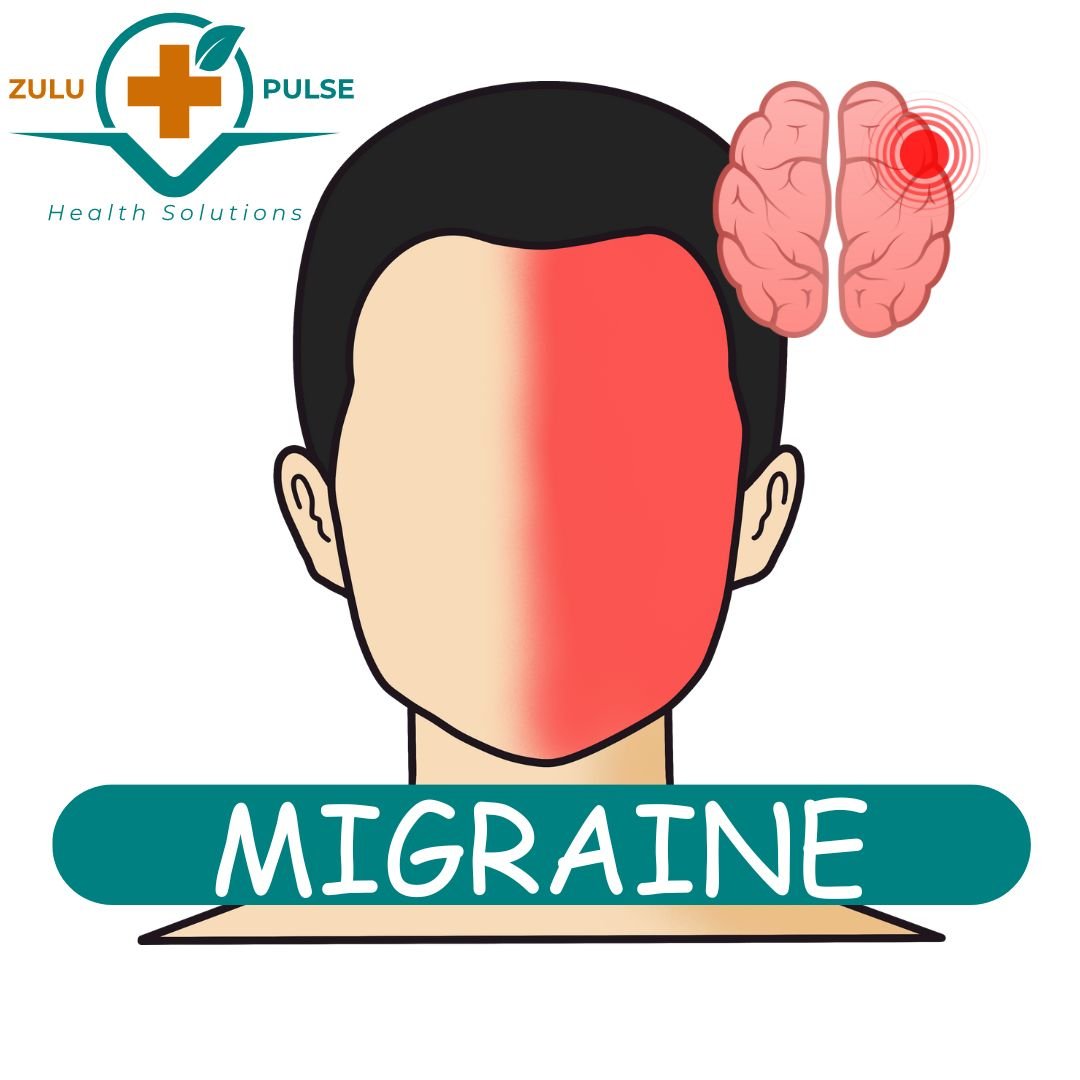Migraine is a very painful form of Primary Headache disorder that makes sufferers’ lives horrible. Symptoms typically last 4-72 hours each attack. You typically get multiple attacks of Migraine per month and after that it gives you a break for a few months.
It affects 18% of women and 6% of men each year, this means that it’s more common in Women than Men. Migraine usually begins during Puberty or young adulthood and stay with the person for most part of their life. It diminishes around the age of 50. Migraines also have a tendency to run in families (genetic susceptibility).
If you prefer a video instead of reading, you can watch it here:
SYMPTOMS OF MIGRAINE
Before symptoms of Migraine, usually a person feels a sensation that the attack is coming or beginning, called Prodrome.
It is then followed by Aura: Here the person has speech disturbance, double vision or movement disturbance and tingling sensations on one side of the face arm.
The Headache of Migraine is on one side of the head (unilateral), Pulsating and very severe. It is so bad that a person may find it difficult to wear clothes or comb their hair. Other symptoms that go with the Headache include Nausea, Vomiting and Photophobia (increased sensitivity to light). These people prefer to stay in a dark, quiet room until the headache is gone.
Causes of Migraine
Migraine is a Neurovascular Pain, which means that it involves Hypersensitivity of Trigeminal Nerve ( one of the nerves in the face) and Inflammation of the Blood vessels in the Cranium and Dura mater (outer covering layer of the Brain).
It has no specific cause but has numerous Triggering Factors such as:
- Red wine, Skipping meals
- Flashing Lights,
- Strong odor
- Weather changes,
- Sleep deprivation
- Stress
- Cheese,
- Chocolate,
- Caffeine,
- Oral contraception (The Pill),
- Menstruation
Diagnosis
There are no Specific tests to Diagnose Migraine. This means the Diagnosis is Clinical. The fact that the Headache is severe, has Multiple attacks and is unilateral makes it easy for Clinicians to Diagnose Migraine.
It is also Important to exclude Other Causes Of Headache which may be Life threatening. Presence of things like Fever, weakness of One side of whole body and Describing Headache as “Thunder Clap Like” means something else like Sub-arachnoid Hemorrhage is causing Headache other than Migraine
Treatment
The best way of Treating Migraine is to avoid attacks in the first place. This can be achieved by identifying and avoiding the Trigger factors.
Non-Pharmacological Treatment: Relaxation techniques, yoga and meditation sometimes help in mild attacks. In Some people breathing into paper bag and placing warm/cold packs on the head helps.
Pharmacological Rx: Paracetamol (Acetaminophen) in combination with NSAIDs such as Aspirin, naproxen, ibuprofen and diclofenac usually help in mild cases. It is also important to give something for vomiting even if the Person is not Vomiting, Such as Metoclopramide. For Severe cases, Use of Triptans help but they are Contraindicated in People with Ischemic heart Disease (Angina) and High BP.
Dihydroergotamine nasal spray can be used as well for migraine. Amitriptyline is sometimes used for migraine. The dose is 25mg to 75mg at night although its use is categorized as off label for migraine.
Prevention
Again, Best prevention is avoiding Trigger factors. In people with Frequent attacks, They can be Prescribed Propranolol, Amitriptyline or Topiramate. The use of Valproate (Epilim) and Pregabalin is no longer recommended.
